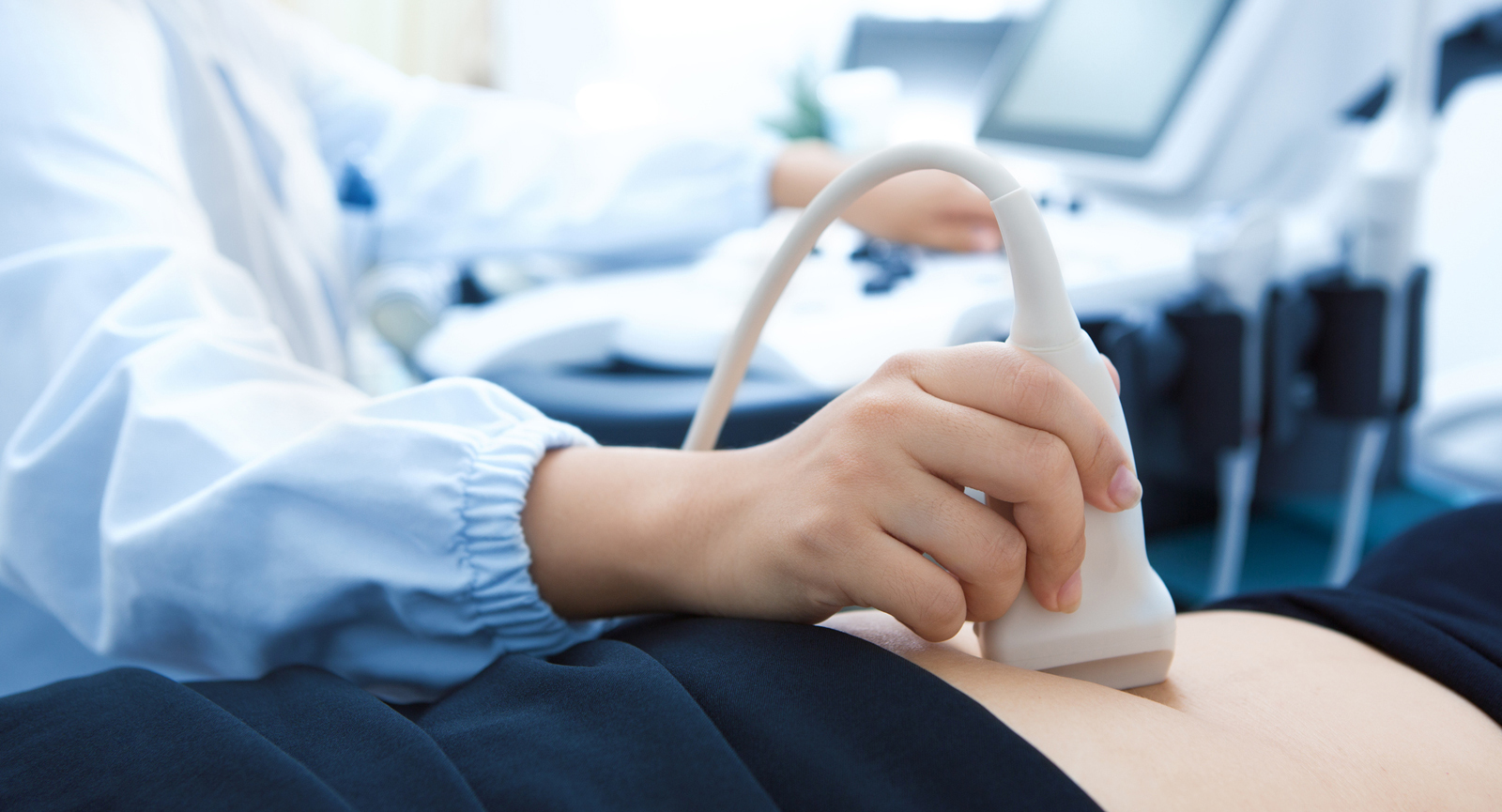Prenatal ultrasound
A) First trimester Ultrasound including NT Scan (11-13 weeks)
It is advisable to offer the first ultrasound scan when gestational age is thought to be between 11 and 13 + 6 weeks' gestation, as this provides an opportunity to achieve the aims outlined above, i.e. confirm viability, establish gestational age accurately, determine the number of viable fetuses and, if requested, evaluate fetal gross anatomy and risk of aneuploidy with the help of calculating Nuchal Thickness(NT).
Most experts recommend that NT should be measured between 11 and 13 + 6 weeks, corresponding to a CRL measurement of between 45 and 84 mm, In appropriate circumstances, additional aneuploidy markers, including nasal bone, tricuspid regurgitation, ductal regurgitation and others, may be sought. NT below 3mm is considered normal between the gestation weeks 11 and 14, and CRL between 45 and 84mm. Ideally, the thickness of nuchal translucency increases with the CRL.
To be more precise, the normal NT ranges from 1.2 to 2.1mm when the CRL is 45mm. And when the CRL is 84mm, the normal NT range is from 1.9 to 2.7mm. But if it is between 3 and 3.5mm, then it is considered high.
B) Second-trimester ultrasound for fetal structural defects/Anomaly scan (18-21 weeks)
The detailed anomalies evaluation is performed between 18 to 24 weeks of gestation in most countries. Since the Medical Termination of Pregnancy Act in India does not permit termination of pregnancy after 20 weeks of gestation, the scan has to be performed between 18 and 20 weeks. Although anomalies may be detected as early as 10 weeks of gestation, it must be remembered that sensitivity for the detection of structural malformations improves with advancing gestational age in the second trimester.
The sensitivity of detection is far superior at 22–24 weeks compared to 18–20 weeks of gestation. Several anomalies may not be evident in the second trimester and would need to be looked for in later scans including third trimester scans. A third trimester anomalies scan, is not, however, mandatory. If for any reason, scans are performed between 14 and 17 weeks of gestation, such as in suspected anomalies in the late first trimester scan or with an abnormal result from biochemical genetic screening or non invasive prenatal testing, the anatomic survey must be repeated between 18 to 24 weeks of gestation.
Serial evaluations may be necessary in several clinical situations and also because of obese/hirsute maternal habitus and fetal position and these are encouraged. When the scan is limited by maternal habitus or fetal position, this should be documented in the report, and serial scans be suggested.
The period of gestation at which the second trimester anomalies scan should be performed, should therefore be a balance between :
1. The legal age for termination of pregnancy.
2. Ability to visualize anomalies at that period of gestation.
3. Patient habitus.
4. Time needed for counseling and further investigations in case an abnormality is evident.
It must also be remembered that all scans between 18 to 24 weeks are not detailed anomalies scans and may be just growth scans or scans done for specific clinical scenarios. If a scan done between 18 to 24 weeks is not an anomalies scan this should be documented in the report.
It is reiterated that while it is not possible to detect all structural congenital anomalies with ultrasound, adherence to these guidelines will maximize the possibility of detecting many fetal abnormalities.
ACOG + SFMF Recommendations on USG 2020
Regardless of whether patients have accepted cfDNA or serum screening, ACOG/SMFM recommend that “all patients should be offered a second-trimester ultrasound for fetal structural defects, ideally performed between 18 and 22 weeks of gestation.” Often, these anatomic ultrasounds can identify “soft markers “for aneuploidy, which are are most commonly identified in euploid fetuses.” If soft markers are seen, the patient’s record should be checked to see if aneuploidy screening had been performed: if not, offer aneuploidy screening; if so, the soft markers are to “be placed in context with those results.”



